In his classic The Dory Book, John Gardner wrote, “The handsomest of all pulling dories is unquestionably the long, slim, but richly curving double-ender that originally came out of the Orne Street boat shop of William Henry Chamberlain of Marblehead.” Designed to take one or two hunters, or a hunter and his dog, to the offshore islands and marshes along the New England coast, the gunning dory had to be reasonably fast under oars, and capable of handling the sort of blustery fall weather that a duck hunter might encounter.
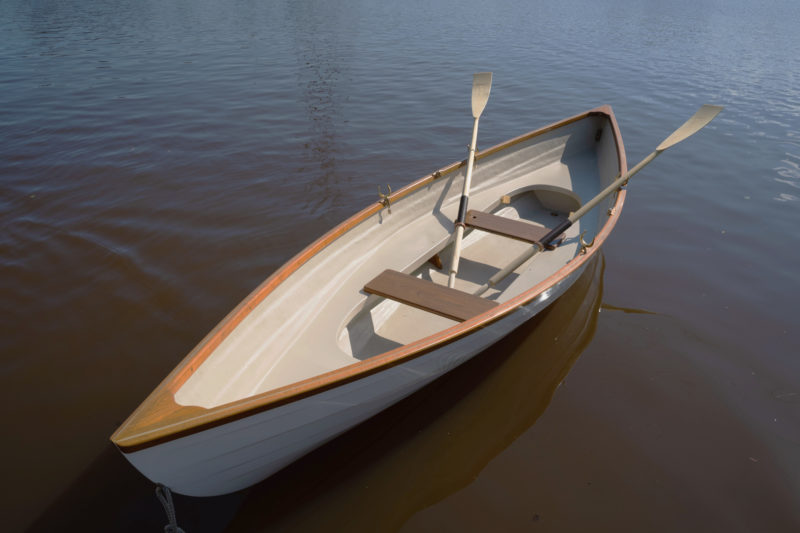 Photographs by Matthew Norman
Photographs by Matthew NormanThe parallel sides of the deck opening allow the slip thwarts to be placed wherever they’re needed for rowing.
My home waters of Sheboygan, Wisconsin, are halfway up the west coast of Lake Michigan. Within minutes of launching, you’re outside of the Sheboygan breakwaters, and out in the waves and winds fetching up from the shores of Chicago, 150 miles to the south. It can really rock out there; the sailors love it. I wanted a boat capable of being rowed by one or two, offshore, in any sort of reasonable weather. Having grown up on the shores of Lake Superior in Duluth, and having worked in the Merchant Marine on the Great Lakes as a young man, I’m very aware of the power of the water. Seaworthiness was at the top of my list of requirements. And, well, the boat had to be beautiful.
My search for a boat led me to Crawford Boat Building, in Marshfield, Massachusetts. I had read of the well-known Crawford Melonseed, and I discovered that Roger Crawford also offers a Gunning Dory. The 15′ double-ender met my specifications: fiberglass, with enough wood trim to highlight the lovely lines of the hull, and the heritage of an open-water dory. Roger responded enthusiastically to my email query and, in autumn of 2019, he agreed to build me a Gunning Dory.
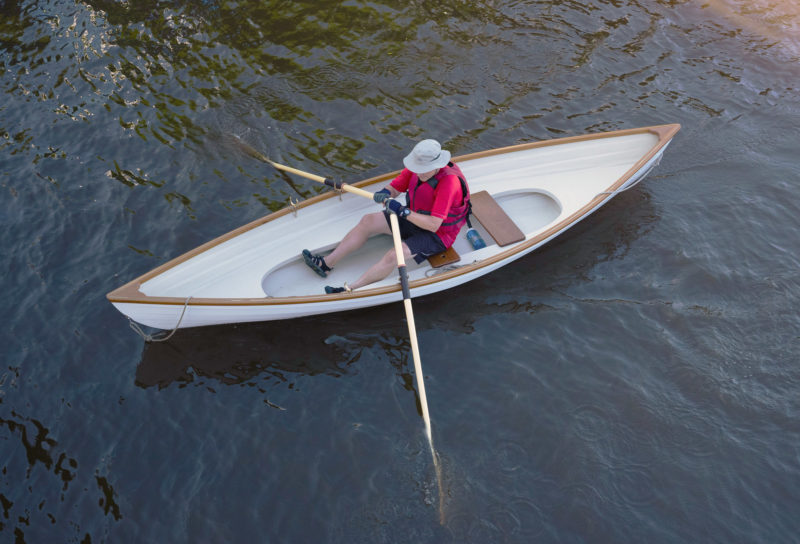
A solo rower uses brackets on the inside edge of the deck to brace the feet.
Roger builds his boats one at a time. The Gunning Dory is hand-laid fiberglass starting with rolled-on gelcoat. The layup for the bottom includes biaxial fiberglass cloth, a 1/2″ foam core, and two layers of 1.5 oz ’glass mat. The sides get 10-oz ’glass cloth, biaxial cloth, and a layer of 1.5-oz mat. Reinforcement is added at the ends where wear is likely and polyester resin is used throughout. The hull is molded with a lapstrake appearance, and the five faux strakes accentuate the hull’s curves and make the layup stronger and stiffer. Foam-filled buoyancy chambers in the bow and stern add to the flotation provided by the foam core in the bottom and foam panels under the deck. The dory’s interior fiberglass has a long racetrack-oval opening; the parallel sides allow the two slip thwarts to rest anywhere along the sides’ length. The construction gives the hull incredible stiffness; nothing flexes as you row. All trim and the seats are solid teak.
There are only a few options available for the dory. I upgraded from the oil to a Cetol finish on the teak after talking with Roger, who convinced me that the Cetol would look better in the long run, and be easier to keep up if I tended to it properly. I also ordered two brass fittings that each allow you to lock a pair of oars to the seats to keep them from being stolen.
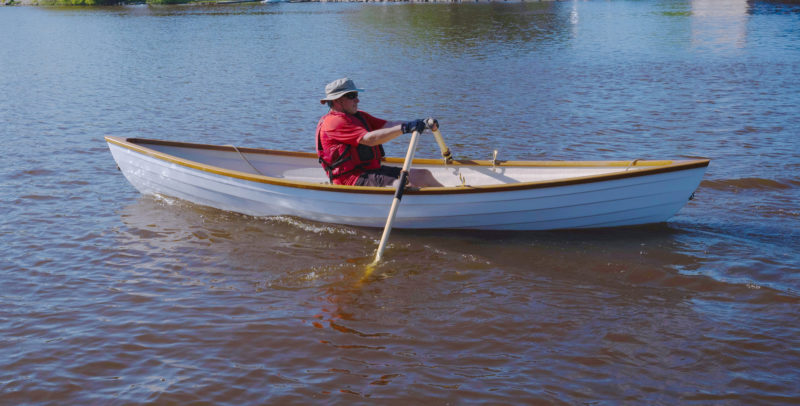
The double-ended hull tracks well without the addition of a skeg.
The boat has three rowing stations, and the two teak seats can be set up for solo rowing, double rowing, or rowing with one to two passengers. The boat comes with three sets of rowlock sockets, and two sets of bronze oarlocks. Changing the seat positions to move between rowing stations is quick, using brass thumb-screws. When rowing double, the forward rower can brace his feet against the forward edge of the aft seat, where Roger places a brass half-oval for your feet to brace against without marring the finish in the wood. Footrests for a solo rower amidships, or the aft rower of a crew of two, consist of fiberglass L-brackets secured with brass thumb-screws to the inner face of the cockpit opening. They can easily be moved fore and aft to accommodate different leg lengths. I prefer having my feet closer together; a bar spanning the brackets would achieve that.
I purchased a light Load Rite trailer from the Crawford shop, and Roger set it up for the boat. Because the boat and trailer are so light, the rig can be pulled by almost any vehicle. The light weight makes launching the 160-lb boat easy. I can move the dory on and off the trailer even when the trailer is stopped with its hubs and bearings above the water level.
The sole of the cockpit is level, and offers good footing as you step aboard. The flat bottom allows the boat to sit upright when beached. Despite the narrow flat bottom, the gunning dory is close to being round-bottomed. Stepping aboard, it’s important to keep your weight centered. Once you’re seated, the boat feels solid underneath you. A pair of 7-1/2′ oars is a good fit for the middle or forward stations; the aft station, with a narrower span between the locks, takes 7′ oars.
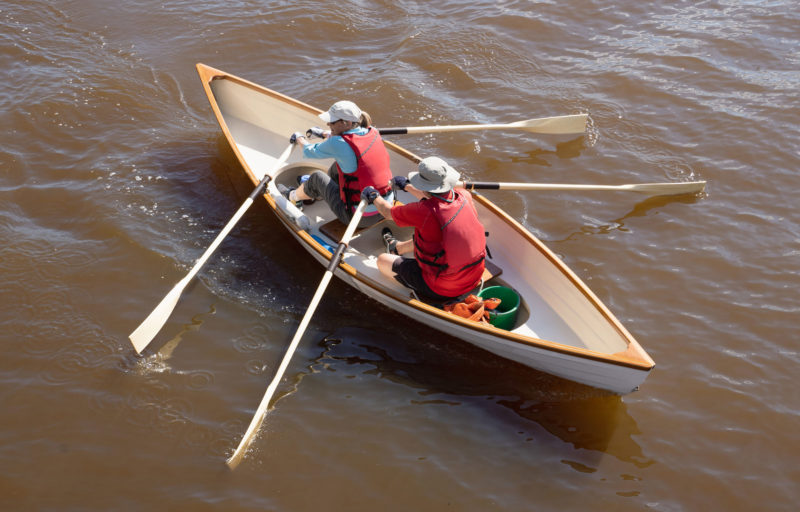
The stroke uses 7′ oars; the bow rower, with a greater span between the locks, uses 7-1/2′ oars.
Rowing the Gunning Dory is a pleasure. The boat has neither skeg nor skids, but it tracks very well, even with a cross breeze or in waves. It tracks dead straight in calmer water and requires minimal correction when the wind is blowing or the waves are hitting at an angle. For a boat that tracks so well, the dory spins easily when one oar is pulled and the other backed. It floats up and over larger waves without hesitation, and rowing into a headwind is a smooth roller coaster ride as you bob up and over the oncoming waves. I have yet to see a drop of spray come aboard.
The Gunning Dory is responsive to even slight corrections with the oars and, despite being light for its size, it carries well between strokes. Rowing the Gunning Dory is so effortless that it is easy to get lost in the rhythm of my rowing. My rowing so far has been local. Down the last mile of the Sheboygan River, then out the breakwaters, and upwind along the shore for an hour. Then, a break: oars stowed, water bottle and snack at hand, I just sit and feel the waves under the boat while watching the shore and the birds. The boat feels stable and I can imagine using it used for hunting, with a dog or two being lifted in or out after retrieving a duck.
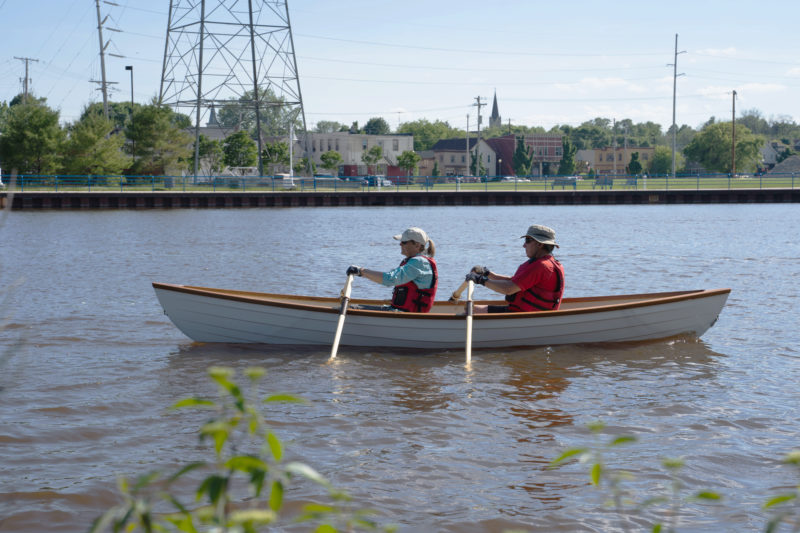
The Gunning Dory responds well to two rowers and carries its speed between strokes.
The Crawford Gunning Dory is a gorgeous boat. The beauty of the wood gunwales, breasthook, and seats is mesmerizing. The workmanship is flawless; everything looks Bristol. Roger’s take on this traditional type meets my criteria for seaworthiness and beauty and is a well-engineered, well-built vessel that is a pleasure to row.![]()
Dan Knoedler works as a Community Mental Health Service psychiatrist in Sheboygan, Wisconsin, where he lives with his wife, Suzanne. He has spent most of his life living in the Great Lakes Basin, on the shores of either Lake Superior or Lake Michigan. His fleet of boats over the years has ranged from a used, homemade 12′ Bolger Old Shoe sailboat, which tried to sink to the bottom the first time he took it out, to a 28′ Bolger-designed Edey & Duff Shearwater Yawl. His children have set their sails to Chicago, Austin, Palo Alto, and Auckland, New Zealand, leaving him plenty of time to pursue his passions. He anticipates rowing, sailing, paddling, and otherwise involved with boats to be the great theme of his free time as he eases into retirement.
Gunning Dory Particulars
Length /15′
Beam/ 3′9″
Bottom width/1′ 8″
Bare hull weight/ 80 lbs
Finished weight/160 lbs
The Gunning Dory is available from Crawford Boat Building, built to order, for a base price of $7,050.
Is there a boat you’d like to know more about? Have you built one that you think other Small Boats Magazine readers would enjoy? Please email us!
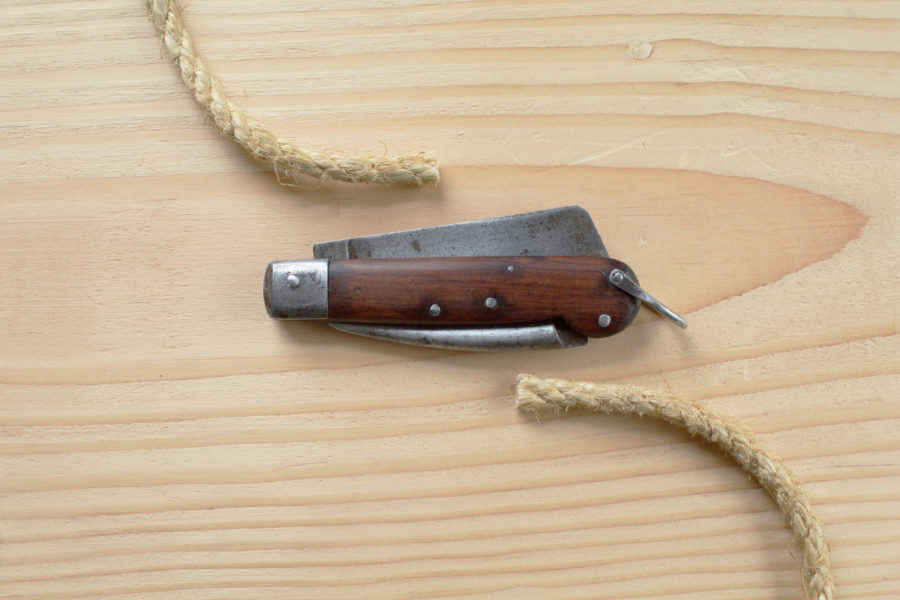
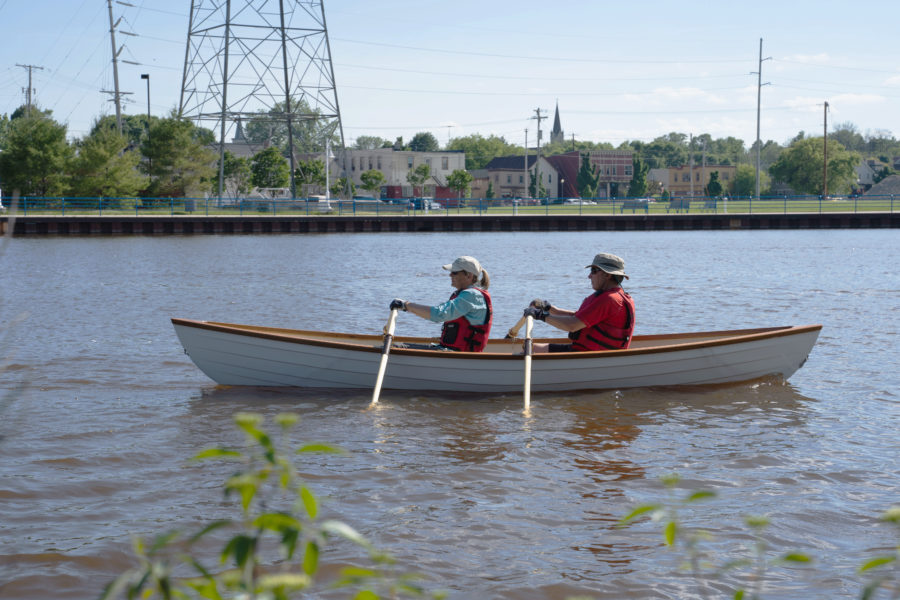
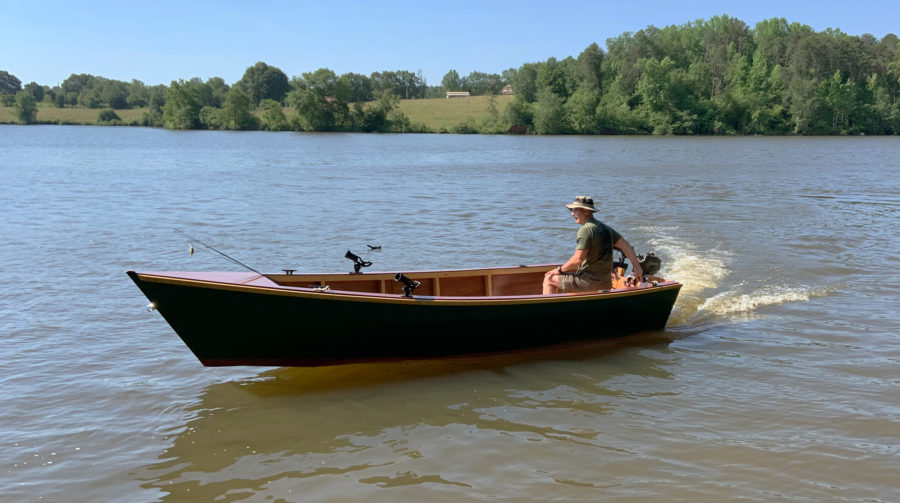
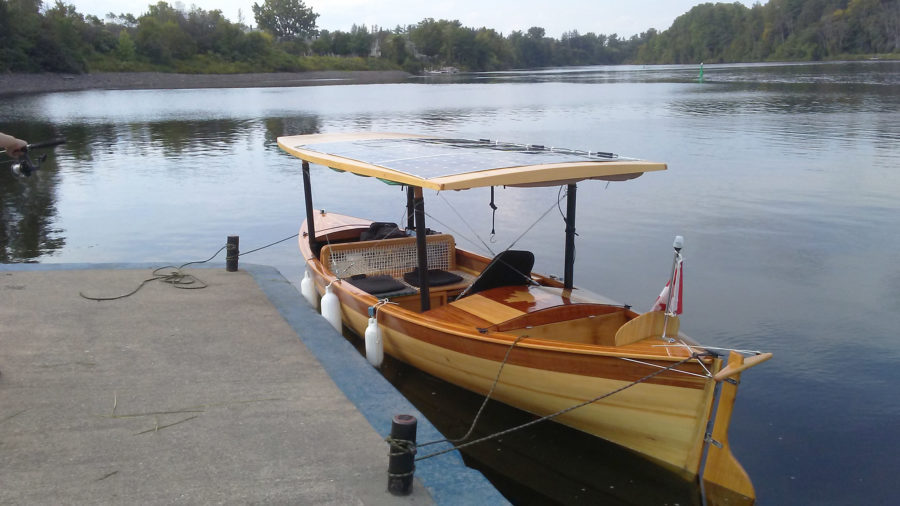
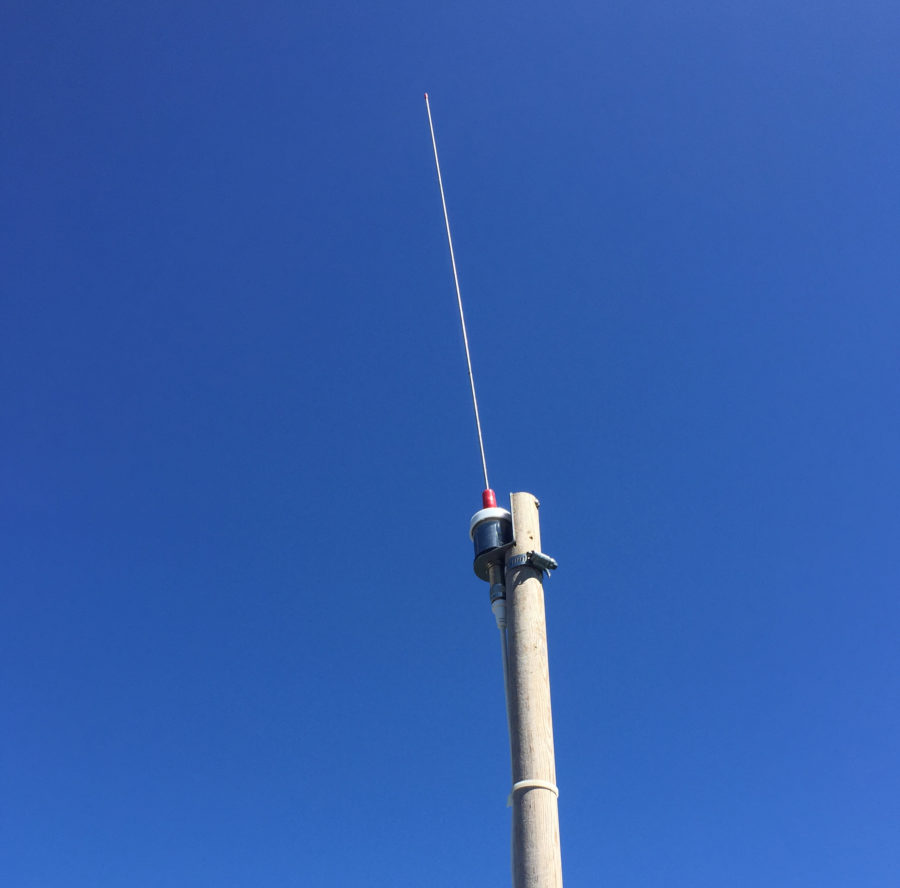
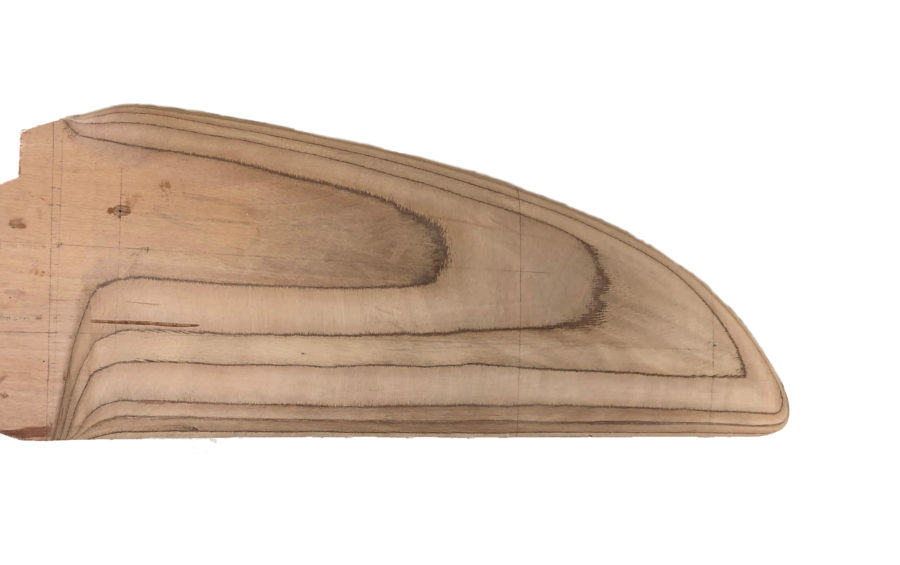
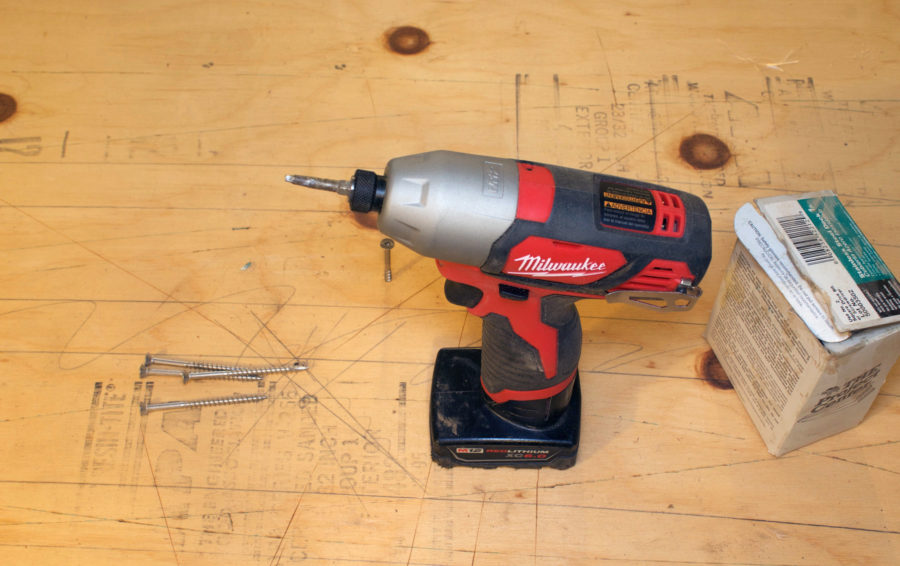
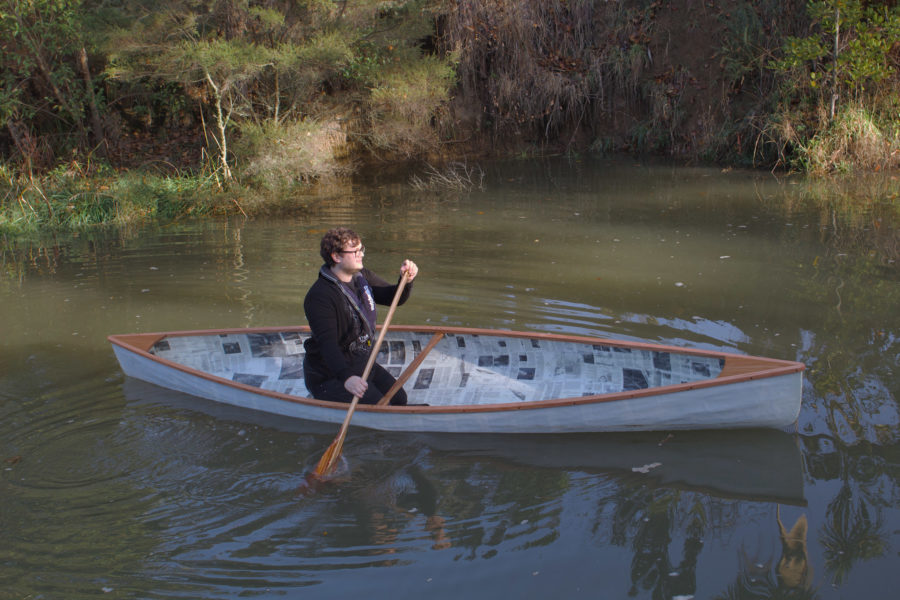
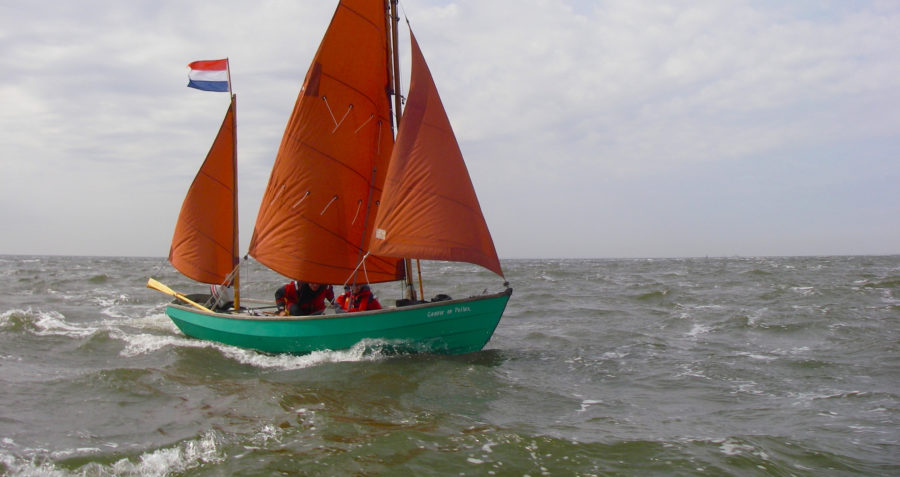
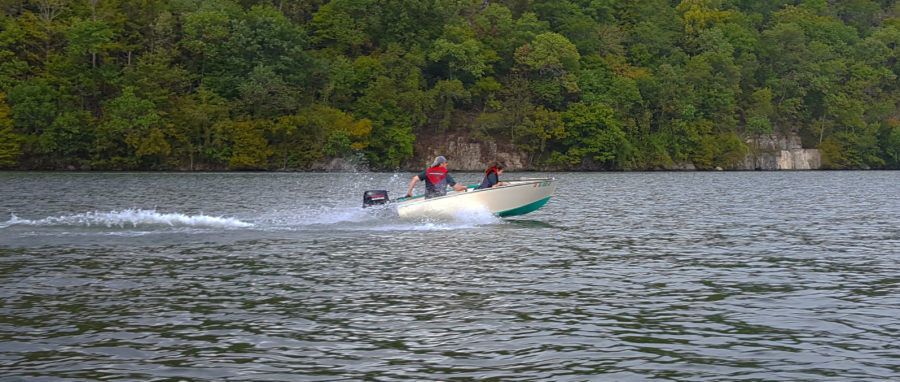
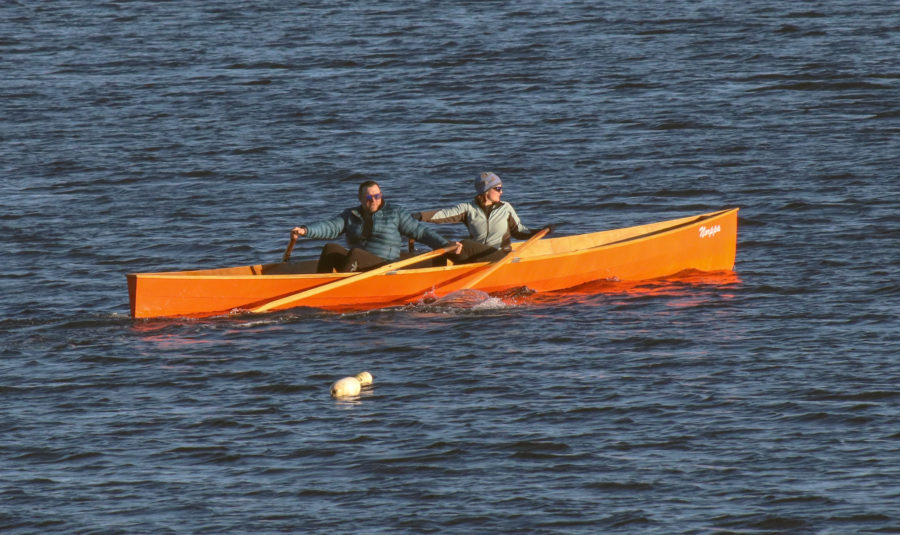
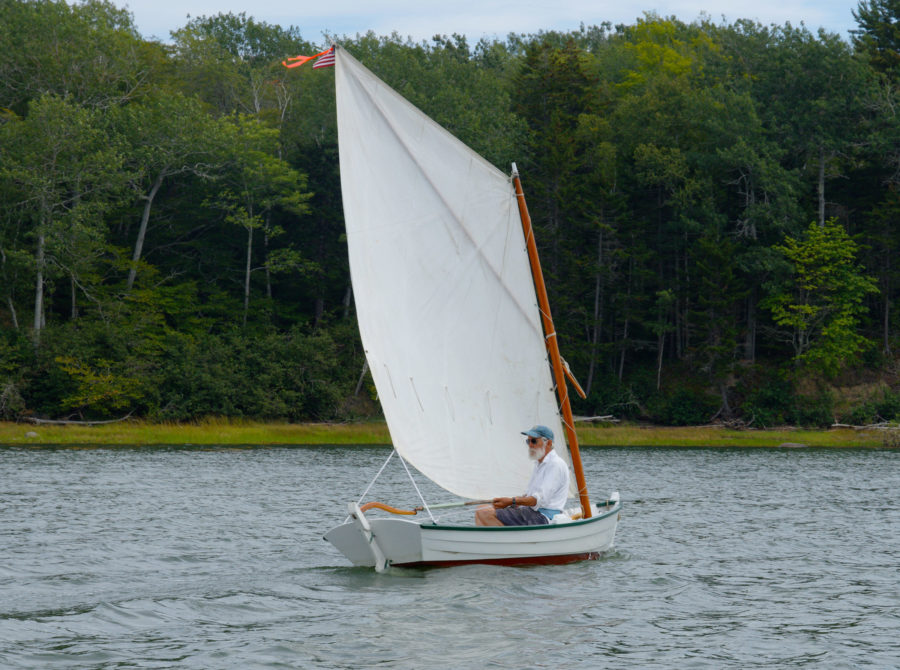
A few years ago Roger did an excellent gelcoat repair job on my tired Lincoln Kayak. Really nice guy too.